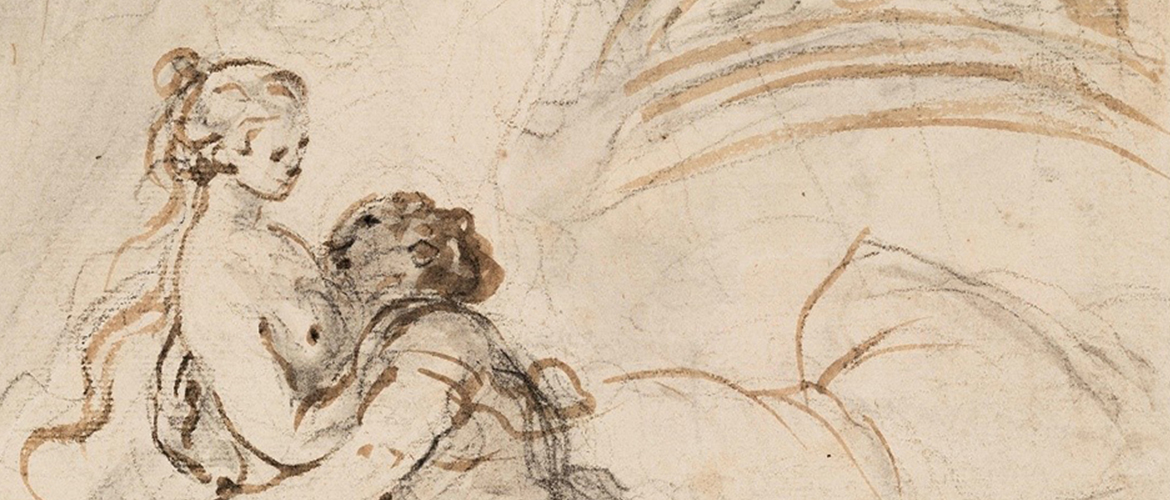Provisionally approved by the Académie Royale de Peinture et de Sculpture in 1765 with the history painting, Coresus Sacrificing Himself to Save Callirhoe, Fragonard never presented a reception piece that would allow his acceptance into the academy. He soon abandoned large-scale works to concentrate on paintings “created for wealthy clients who appreciated romantic and libertine subjects,” the style to which he devoted himself and for which he is best known today.
However, it was literature that truly fascinated the artist, as revealed by his graphic production, which is mainly devoted to texts as varied as the Tales and Novellas of La Fontaine, Jerusalem Delivered, and Don Quixote, but also, as found here, Orlando Furioso. This drawing is part of a suite of 179 sheets, most likely realized around 1780, corresponding to the first sixteen cantos of the poem Ludovico Ariosto completed in 1532.
More than a literal illustration, Fragonard offers a “fine and spiritual” interpretation of this epic poem, following “the poem scrupulously while retaining only the essentials so as to translate its spirit above everything.” The present sheet corresponds to the moment when Rogero succumbs to the charms of the sorceress Alcina:
“He leaps from bed and folds her to his breast,
Nor waits until the lady he undressed;
Though but in a light sendal clad, that she
Wore in the place of farthingale or gown;
Which o’er a shift of finest quality,
And white, about her limbs the fay had thrown:
The mantle yielded at his touch, as he
Embraced her, and that veil remained alone,
Which upon every side the damsel shows,
More than clear glass the lily or the rose.” Orlando Furioso, canto 7, v. 27–28, translated by William Stewart Rose.
It is the amorous embrace that captures the attention of the author of the famous Bolt; here, its echo is reversed, sheltered under a quickly sketched four-poster bed, the two lovers abandon themselves, their passion unconstrained. The spirited and delicate execution reflects both the ardor of Alcina and Rogero, the palpitation suggested through the light transparent canopies that energize the scene. This magnificent sheet is a perfect example of one of the most brilliant and most personal facets of Fragonard’s production. It reflects the sensitivity and invention of this artist, whom—at the time of our drawing—Madame du Barry preferred to the neoclassicism of someone like Joseph-Marie Vien. In the series of drawings dedicated to Orlando Furioso, most of which are now in American collections, it is the singularity of this virtuoso draftsman that bursts forth. With this acquisition, Beaux-Arts de Paris has enhanced its collection with a particularly rare and beguiling example of great graphic and artistic liberty, where suggestion prevails over description, a theme that remains immensely topical in contemporary creation.

Alcine retrouve Roger dans sa chambre, vers 1780 Pierre noire et lavis de bistre, 38,5 x 23,5 cm © Beaux-Arts de Paris, EBA 11197



